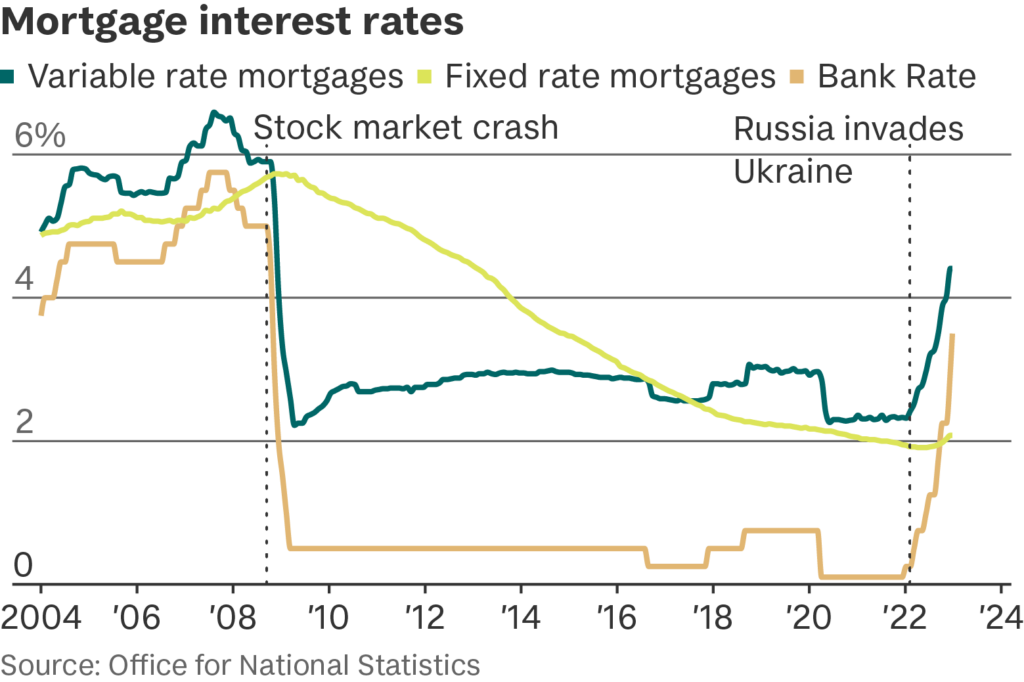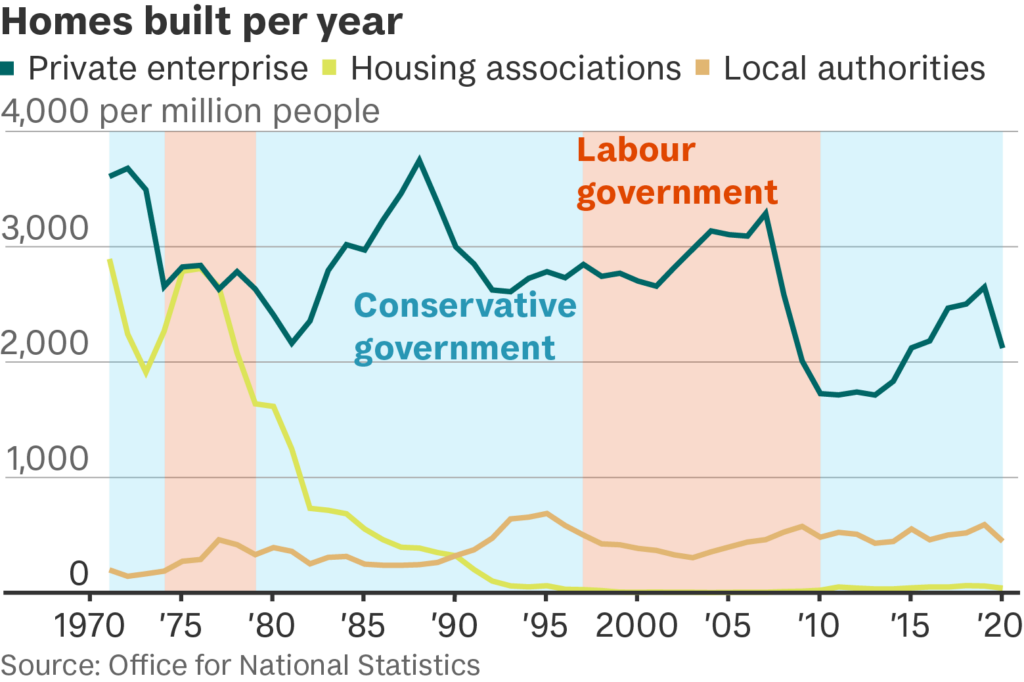
Thatcher preached the virtues of a home-owning democracy. Sunak claims her mantle but can’t boost ownership – or housing
This week the UK government set about solving the country’s perennial housing crisis with a series of policy initiatives:
- Urban councils failing to meet housing targets will only be able to refuse planning permission on brownfield land in exceptional circumstances.
- Full planning permission will not be needed to convert shops, offices and commercial buildings into homes – allowing, according to Rishi Sunak, one million new homes to be built.
- “No fault” evictions will be banned this year.
So what? This will not win the Conservative Party the election. In 2019, around half of owner-occupiers voted Tory compared with around 25 per cent of homeowners who voted Labour. Since the disastrous 2022 mini-budget, the Conservatives have consistently trailed Labour in voting intention polls among homeowners and Sunak is limping towards an election with interest rates that remain stubbornly high.

High interest. The government’s first problem is the 7,362,436 households with a mortgage. Almost 30 per cent of UK households are coping with or facing the sudden, sharp jump in interest rates caused initially by the war in Ukraine and boosted by the Liz Truss premiership. Between them these two shocks doubled mortgage rates after almost a decade in which borrowing costs were less than 2.5 per cent.
No interest: The government’s second problem is that mortgage-free homeowners, almost a million more than ten years ago, are more worried about the NHS than interest rates, splitting the concerns of the Tory base.
Whose default is this? According to UK Finance, 96,680 mortgages were in arrears in the fourth quarter of 2023, up nearly ten per cent on the previous quarter and climbing steadily over the past year. In addition
- the Financial Conduct Authority reported that 29 per cent of UK adults with a mortgage experienced payment increases in the 6 months to January 2023;
- Bluestone Mortgages reports that one in ten mortgage payers missed a payment in 2023; and
- the Office for National Statistics reports that 35 per cent of adults paying rent or a mortgage said they were finding payments very or somewhat difficult to afford in January 2024 – roughly the same as in 2023.
Also in January, the Money and Mental Health Policy Institute said 1.3 million people in the UK with mental health problems were spending less on essentials, including medicine, in order to afford their mortgage.

We have a housing crisis. Britain needs to build a minimum of 500,000 houses a year to house its growing population, according to the LSE’s Tim Leunig. More than 300,000 people are homeless and 140,000 children live in temporary accommodation, costing local councils £1.7 billion in 2023. Three and a half million tenants are worried about becoming homeless due to housing costs, according to YouGov.

But building more homes is not an election winner. The government’s abandonment of a 300,000-a-year housebuilding target – set in its 2019 manifesto but dropped by Michael Gove in 2022 – was the result of pressure from rebel suburban and rural MPs including Theresa Villiers of Chipping Barnet. Only 42 per cent of younger voters want more homes built. The only exception is social housing. Almost three-quarters of Conservative voters believe the UK needs more social housing, according to YouGov.
Brownfield sites aren’t all that. “The reason people aren’t just building on those sites anyway is that sites are often contaminated so they’re more expensive to build on,” says Stephen Delahunty, news editor at Inside Housing. “Even with brownfield first, London can still only deliver an extra 10-15,000 homes a year.”
What’s more… The interest rate trap is spreading its net wide. 30 per cent of European mortgages with rates fixed before 2022 expire this year.
More than 70 countries are holding elections this year, but much of the voting will be neither free nor fair. To track Tortoise’s election coverage, go to the Democracy 2024 page on the Tortoise website.











